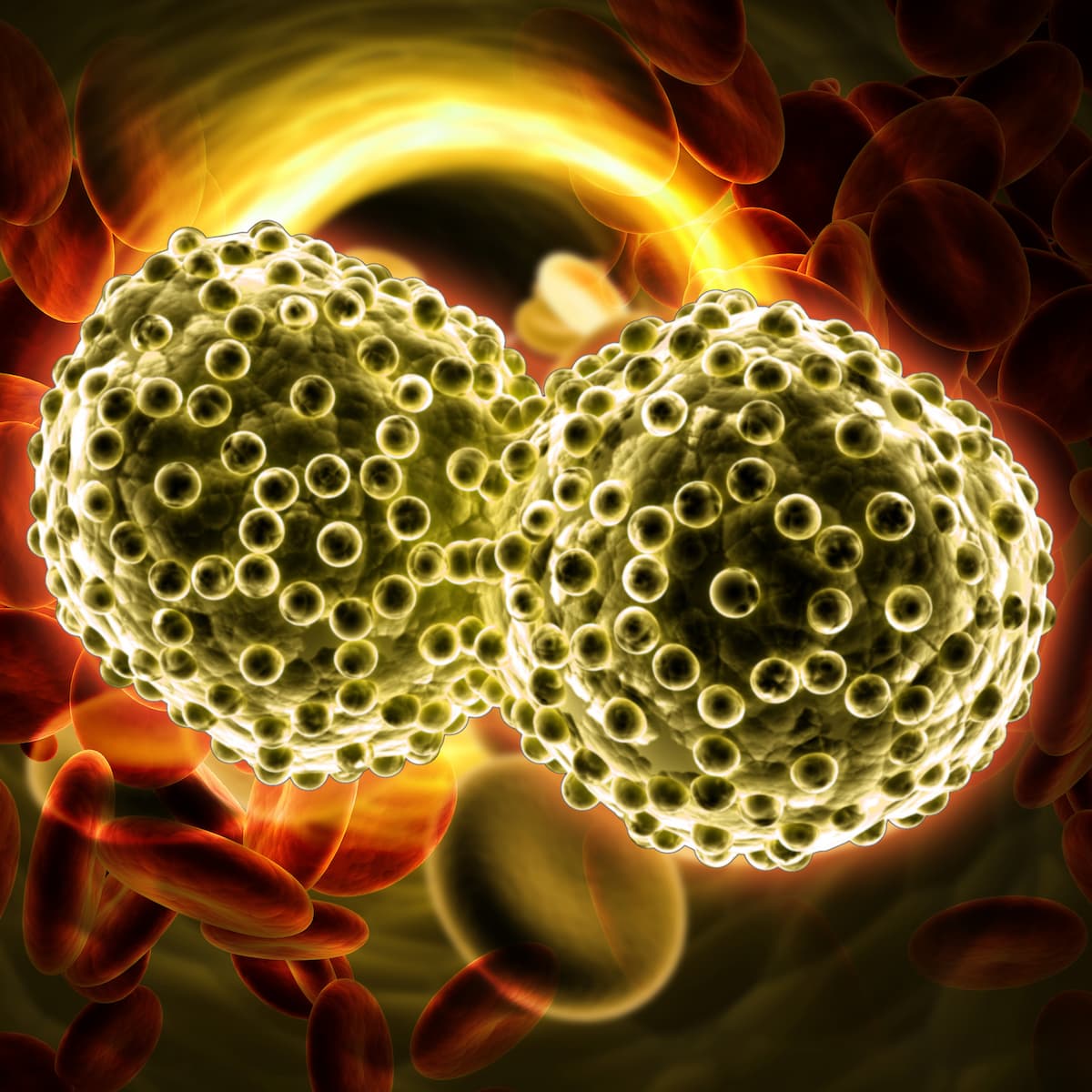Atezolizumab Combo Results Shows Promising Option in EGFR-Mutated NSCLC
Atezolizumab combination therapy elicited better responses in patients with PD-L1 expression of 1% or more with EGFR-mutant NSCLC.
Atezolizumab combination therapy elicited better responses in patients with PD-L1 expression of 1% or more with EGFR-mutant NSCLC.

A modified combination regimen containing atezolizumab (Tecentriq), bevacizumab (Avastin), pemetrexed, and either cisplatin or carboplatin, may benefit patients with EGFR-mutant non–small cell lung cancer (NSCLC) who experienced tyrosine kinase inhibitor (TKI) resistance, according to a study published in Clinical and Translational Medicine.
Additionally, a higher objective response rate (ORR) and longer progression-free survival (PFS) were observed in patients with PD-L1-positive tumors.
Topline data came from a phase 2 trial (NCT04147351) evaluating the combination regimen in EGFR-mutant NSCLC following TKI resistance. Findings reveal that among 21 patients evaluable for efficacy, 1 achieved a complete response (CR), and 8 achieved a partial response (PR), with an ORR of 42.9% (95% CI, 21.2%-64.6%). Additionally, the disease control rate (DCR) was 100% among this patient population, with no cases of primary resistance observed.
Furthermore, higher response rates were observed in patients with PD-L1 expression of 1% or more, with 75% eliciting a response. By contrast, patients with PD-L1 expression of less than 1% had a response of 23.1% (P = .032).
“This study demonstrates the promising efficacy of combining atezolizumab, bevacizumab, pemetrexed, and cisplatin/carboplatin in [patients with] EGFR-mutated NSCLC who progressed on TKI therapy,” Shang-Gin Wu, MD, assistant professor at the National Taiwan University Hospital, wrote in the publication with study coinvestigators. “Positive PD-L1 expression of 1% or more correlated with higher ORRs and longer PFS. Furthermore, immune cell profiling may aid in identifying patients who may benefit from this approach.”
The single-center, single-arm phase 2 study initially screened 30 patients with stage IIIB to IV EGFR-mutant NSCLC following TKI resistance. Patients who were enrolled (n = 22) were treated with 1200 mg of atezolizumab, 7.5 mg/kg of bevacizumab, 500 mg/m2 of pemetrexed, and either 75 mg/m2 of cisplatin or carboplatin at the area under the curve of 5 mg/mL/min intravenously every 3 weeks for 4 cycles during the induction phase. Following induction, patients continued treatment with atezolizumab, bevacizumab, and pemetrexed until disease progression, unacceptable toxicity, or death.
The median age of efficacy evaluable patients (n = 21) was 63.5 years (range, 46-73), with 14 female patients enrolled and 15 patients who were never smokers. The 2 most common EGFR mutations present were exon-19 deletions (40.9%) and L858R mutations (50.0%).
In total, 14 patients had PD-L1 expression less than 1%, 8 had brain metastases, and 16 had 3 or more metastatic sites. Prior radiotherapy was utilized by roughly half of the patient population (n = 11).
The primary end point was ORR. Secondary end points included PFS, duration of response (DOR), and overall survival (OS).
Additional efficacy findings reveal that the combination therapy elicited a median PFS of 6.3 months (95% CI, 3.8-8.8) and a median DOR of 9.4 months (95% CI, 0.0-26.6 months) among all comers. Furthermore, OS was 20.2 months (95% CI: 2.2-38.8 months).
Subgroup analysis reveal that a significant PFS benefit was observed among patients with PD-L1 expression of at least 1% vs less than 1% at 14.0 months vs 6.1 months (P = .022). By contrast, a significant difference in OS was not observed (27.6 months vs 20.2 months; P = .969).
Any grade adverse events (AEs) were experienced by 100% of the patient population, the majority of which were grade 1 or 2. Grade 3 treatment-related AEs occurred in 9 patients and there were no grade 4 or 5 adverse events reported. The most common any grade AE was abnormal liver function (9.1%).
Reference
Wu SG, Ho CC, Yang JCH, et al. Atezolizumab, bevacizumab, pemetrexed and platinum for EGFR-mutant NSCLC patients after EGFR TKI failure: a phase II study with immune cell profile analysis. Clin Transl Med. 2024;15(1):e70149. doi:10.1002/ctm2.70149
Newsletter
Stay up to date on recent advances in the multidisciplinary approach to cancer.